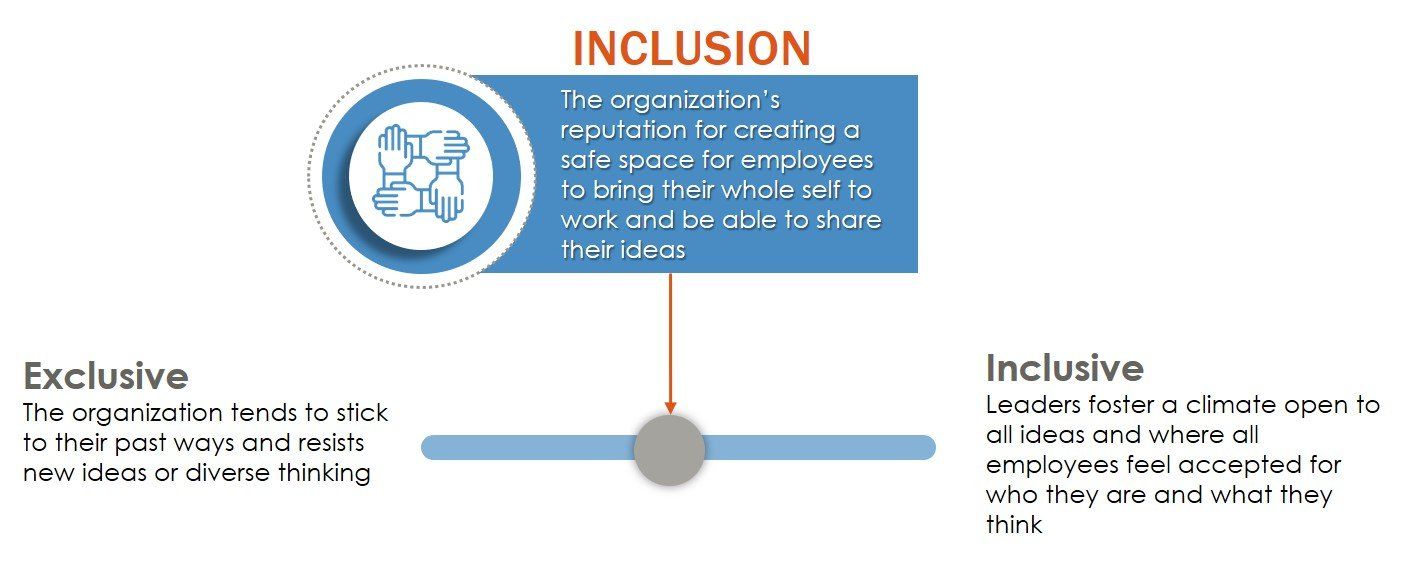The Secret 7’s seventh dimension of culture we call “inclusion” represents a specific theme that we have seen across the globe, and really represents one combined definition of DE&I. This dimension measures an organization’s propensity toward being open (or not) to new ideas, to welcoming all perspectives, and to being intentional about team formation. The question is: when is it in the organization’s best interest to widen the circle and form diverse teams, and when are like-minded colleagues with similar project experience a greater advantage?
The Secret 7 Culture Conversation: #7 OF 7: INCLUSION

In our experience, high-performing organizations intentionally form diverse-by-design teams by inviting a diverse slate of team members based on their unique backgrounds, perspectives and experiences. But the most diverse teams, without inclusive leadership, won’t help you toward your goal of ideation and innovation either. In a perfect world, organizations and their leaders will achieve both the “Yin and the Yang.” They will not only form diverse teams, but they will have possess/develop inclusive leaders who can foster an environment or climate that creates a safe place for all team members to contribute their unique perspectives.
Said differently, the most diverse teams, without inclusive leadership won’t create material value for an organization. And the most inclusive leaders who create inclusive environments, but who are working with a “homogenous” team may not help the organization achieve new thinking either. It is the “Yin and the Yang” of having both dynamics present at once, which allows leaders to leverage diversity of thought into actionable, innovative solutions that help an organization achieve greatness.
A breakdown of this pattern of organizational culture and high-performance can also be found in the sub-dimensions which are a part of this final Secret 7 dimension. Contributing to the dimension of inclusion we also see the importance of leaders and organizations being adaptable vs. limiting. We see strong leaders being flexible with their styles of managing their teams, adapting to the situation based on what is called for in the context for what they are trying to solve.
We also see leaders in high-performing organizations being open and welcoming to diverse perspectives, as opposed to being more set in their ways, or hesitant to try a new path; innovation comes faster and more fluidly.
But even more important than simply greater innovation, there’s nothing wrong with a bi-product of this work: healthier cultures, safer climates, and a more welcoming and inclusive workplace. In this time of re-thinking privilege, power structures, and the environments in which we all were raised, we have a unique opportunity to create workplace cultures that foster greater inclusion, acceptance, and equity for all.
The Secret 7 in Sum
Our goal for this Secret 7 journey is to ultimately create really positive and productive workplaces, where individuals can bring “their whole selves” to work. Imagine a day when the workplace, where we spend a majority of our waking hours during the week, is a place we look forward to going every day. Imagine employees feeling psychologically safe, able to contribute their best work, and feeling engaged, respected, and treated so well they give exceptional levels of discretionary effort.
The organizational benefit? Employees are committed to the larger cause and fully behind the vision laid out by senior leadership. Retention is improved, workplace satisfaction is higher, and performance is at levels that we may have only previously dreamed about. Here’s to the new reality, a chance to push the reset button, and build the kind of organization we all want to work at for years to come.
For more information on The Secret 7, or if you would like to receive a unique survey link (custom URL), free for your company/organization, please click here and complete the form.












